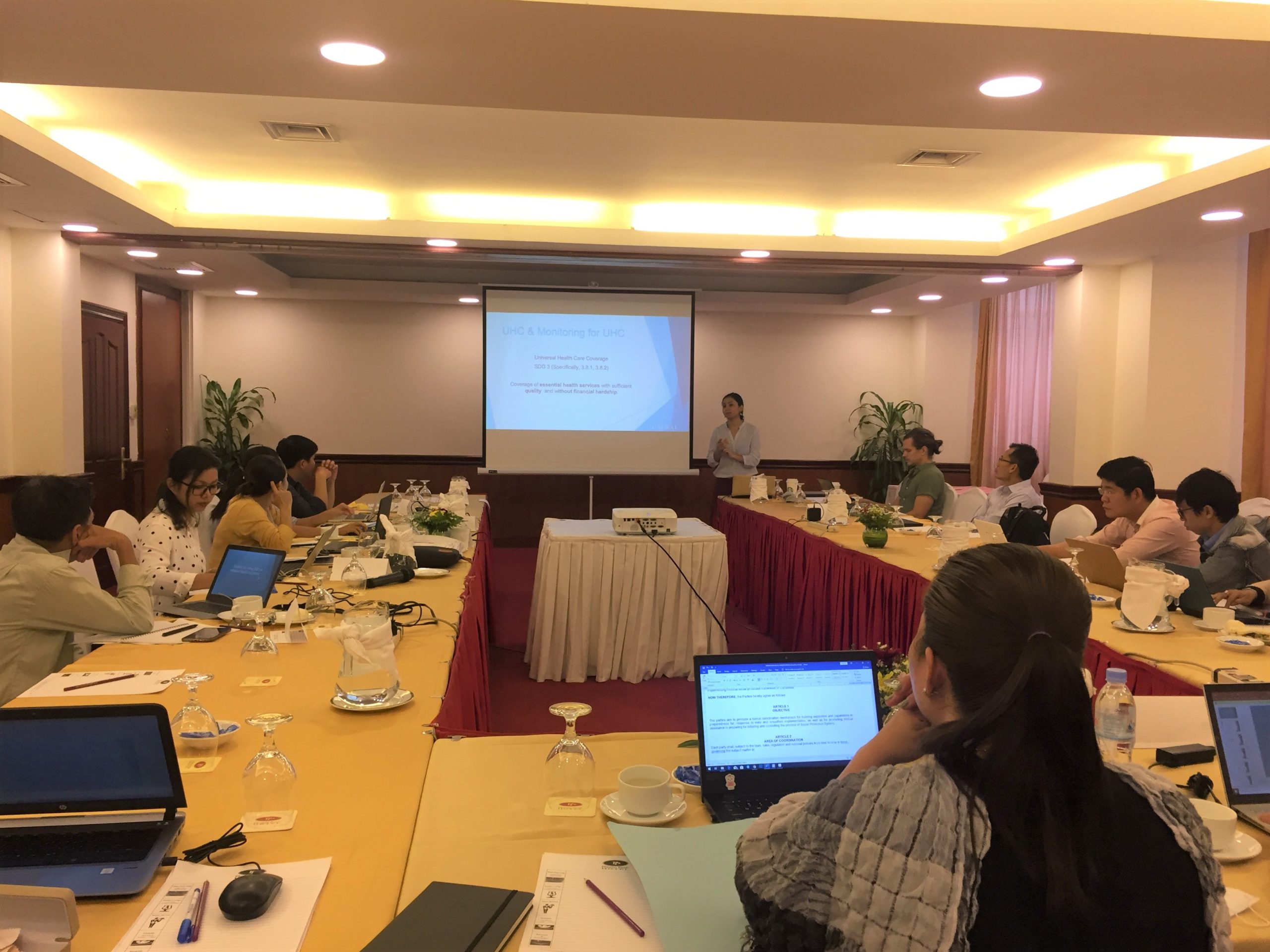The Government of Cambodia embarked on Universal Health Coverage (UHC) with the endorsement of the National Social Protection Policy Framework in July 2017. To monitor the implementation of the National Social Protection Policy, the National Social Protection Council (NSPC) and associated structures, the Executive Committee and General Secretariat (GS NSPC), have been established.
The Word Health Organization and Word Bank jointly released a common framework for monitoring progress towards UHC (Sustainable Development Goal indicator 3.8) that recommends focusing on coverage with essential health services together with a degree of financial risk protection. These two measures are interrelated and should be measured at the same time, at all levels of the health system. Coverage with financial risk protection is measured by the incidence of ‘‘catastrophic’’ health expenditures and the incidence of impoverishment because of out-of-pocket health payments.
The primary dataset to obtain all required information to monitor financial risk protection is the Cambodian Socioeconomic Survey (CSES). This survey is conducted every five years with a sample of 12,000 households (2004, 2009, 2014). Since 2009 this survey, using a similar data collection instrument, is repeated annually in-between using these five-yearly surveys with a smaller sample size of 3,000 households. The CSES provides a comprehensive set of indicators on the living conditions in Cambodia, covering the main socio-economic areas such as health, education, housing conditions, economic activities, vulnerability, etc.
To date the analysis of the CSES to monitor UHC has been done by development partners which is why P4HC+ embarked on the initiative to build local capacity to produce the required information. The National Institute of Public Health (NIPH) has been identified as the resource centre for information related to monitoring UHC. Its staff members will convey this information to the Ministry of Health’s Department Planning and Health Information (DPHI) that in turns informs the GS NSPC. Attention is paid to enable critical appraisal of the information by staff members of the GS NSPC while staff members of the National Institute of Statistics (NIS), Ministry of Planning, are also included in the training since they produce the CSES data. Their participation may result in a better appreciation of the challenges encountered by those having to analyse the data.
As such, staff members of the DPHI, NIPH, NIS and GS NSPC, joined by selected members of the University of Health Science (UHS), attended a series of workshops focusing on econometric analysis to produce and appraise the required information. The workshops were facilitated by HP+ and Causal Design with financial and additional technical support by P4H.
The first 4-day workshop happened in June of this year and focused on familiarizing participants with handling large secondary datasets, more specifically the CSES. This included issues such as cleaning the data, generating operational questions, developing an analytical plan, preparation of datasets for analysis, handling missing data, weighting of the sample, (re)coding, connecting files for analysis, developing a code book, identifying and selecting variables for formulating poverty rates.
The second workshop during September 17-20 was also attended by 18 participants of various institutions and focused on the descriptive assessment of equity and financial risk protection. This included familiarizing participants with related concepts. Using the 2016 and 2017 CSES participants extracted the required information to calculate catastrophic and impoverishing health expenses using various thresholds as well as population characteristics such as locations, socioeconomic status, gender, households’ specificities. Next year two more such workshops will be held.


